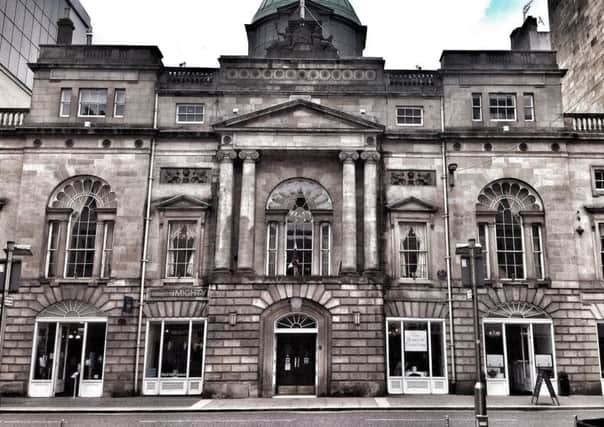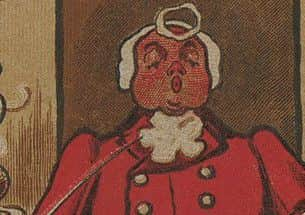The outlandish luxury enjoyed by Glasgow's merchants


Formed in 1798, the Pig Club was home to the city’s so-called “sugar aristocracy” who derived their wealth from the estates and plantations of the West Indies.
At the Pig Club, which met in the Trades Hall during winter, the shows of wealth of its members were unashamedly on display.
Advertisement
Hide AdAdvertisement
Hide Ad

Rum punch was served, menus were written in gold on white satin and turtle was among the delicacies said to have been served. Balls for hundreds of people were thrown at short notice at the nearby Assembly Rooms.
Glasgow had not seen such “luxurious extravagance” before, according to one account of the day.
Business in the Caribbean had become a priority for many merchants after much of the tobacco business was ruined by the American Revolution.
Direct business links with the estates of Jamaica were held by club members, including its first president, John Gordon of Aikenhead, of Cathcart, Lanarkshire.
Advertisement
Hide AdAdvertisement
Hide Ad

“Perhaps few in the community held a more prominent position,” Dr Strang, who wrote an account of Glasgow social clubs in 1857, noted.
Gordon was partner in tobacco and sugar trading firm Stirling, Gordon and Co, considered to be the pre-eminent trading company in the West Indies.
Charles Stirling of Cadder, who also headed up the firm, was also a member of the Pig Club.
Other key figures at the company - as well as Gordon’s son - were to later benefit substantially from payments made by the Government to compensate for loss of slaves following parliament’s final abolition of slavery in 1833.
Advertisement
Hide AdAdvertisement
Hide AdDr Strang recorded his observations of Pig Club in Glasgow and Its Clubs: Or Glimpses of the Condition, Manners, Characters and Oddities of the City.
Feasts were four or five courses and balls for hundreds of guests thrown at short notice at the Assembly Rooms in Ingram Street.
West Indian rum was central to gatherings. It was used as stakes in bets, with a bottle worth the equivalent of eight shillings. If the President forgot to wear his pig chain to dinner, he would be fined a bottle of the liquor.
Dr Strang said: “Rum punch, was in face, the universal beverage of the members at their dinner, as it was also, as elsewhere the never failing accompaniment of every supper.
Advertisement
Hide AdAdvertisement
Hide Ad“Whisky, those days, being chiefly drawn from the large flat-bottomed stills of Kilbagie, Kennetpans and Lochrin, was only fitted for the most vulgar and fire-loving palates.”
Dr Strang does not hold back in his admiration of its patrons, who he described as a “truly aristocratic fraternity”.
Politics was also high on the agenda of the Pig Club, with Gordon and Stirling “central luminaries” of the Tory Party, with interviews for prospective MPs held at company offices.
Minutes of the Pig Club show the topics up for discussion within the walls of the Trades Hall, from the restoration of Tory rule to Napoleon’s Italian campaign.
Advertisement
Hide AdAdvertisement
Hide AdAccording to Dr Strang’s account, the growing abolition movement was not discussed at the society built on trade with the West Indies.
In 1792, the year that produced the most petitions for abolition, there were 561 from Britain – a third of which came from Scotland.
Dr Strang described the members of the society as perhaps the “rulers of Glasgow” in the eyes of its citizens. He does not note that the city was to become a leading voice in the abolition movement.
The Glasgow Anti-Slavery Society was formed in 1822 andd, according to the Scottish Archive Network, the city was known as one of the staunchest abolitionist cities in Britain.
Advertisement
Hide AdAdvertisement
Hide AdThe last meeting of the Glasgow Pig Club last was held in May 1807 -just two months after the 1807 Abolition of the Slave Trade Act was passed.
